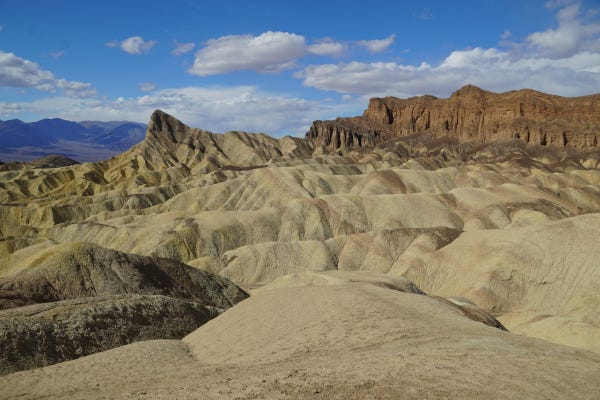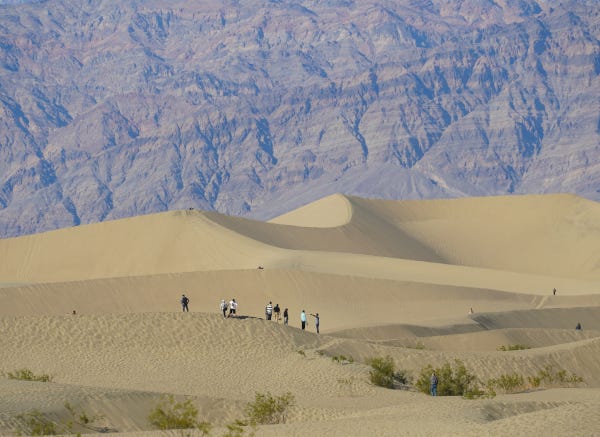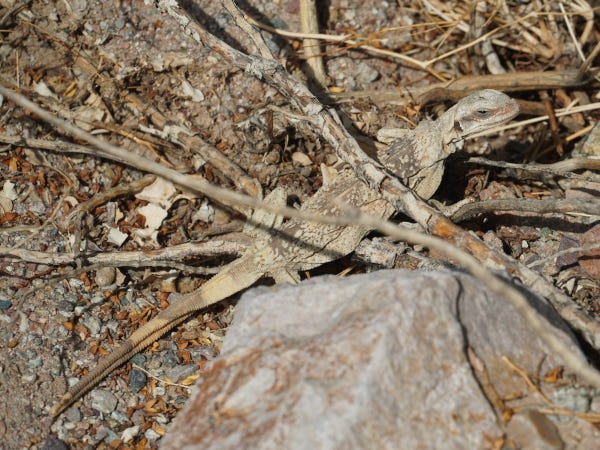As a dyed-in-the-wool peacenik, I have to chuckle just a little that I was born on a Navy weapons range near a place called Crumville (now Ridgecrest), California. I was further amused when I learned that both the Sidewinder missile and yours truly emerged from our respective bunkers at China Lake in the same year. Dad was a Navy aircraft mechanic for whatever testing program happened to be underway. We didn’t stay long.
I vaguely remember a few childhood forays into Death Valley when it was “hotter than hell,” which to a kid meant exactly that. I did not want to go to Hell, especially if I had to stay there. Passing through quickly was semi-okay.
As a young adult, it occurred to me that the place of my birth was almost exactly 100 kilometers from Badwater Basin, below sea level and the lowest point this side of south Argentina. Coincidentally, my “bunker” was also just over 100 kilometers from Mount Whitney, the highest peak in the Lower 48. I’ve been to Death Valley many times, so it was extra special to finally reach the summit of Whitney with my little brother several years ago.
In the chilly days of late winter three years back and again last year, a few buddies and I ditched the Northwest’s rain and the cold for about five days of camping and hiking in Death Valley. It was not hell, nor was it Hell. In fact, it was wonderful. Both trips coincided, quite by accident, with the Dark Sky Festival. We took advantage by attending talks, browsing exhibits, tagging along on field trips and stargazing at night with those who brought along, and happily shared, their fancy-schmancy telescopes. This year’s festival begins as I write this, the weekend of February 10-12. If you’ve missed it, keep an eye out for next year. It’s a fun, family-friendly kind of thing to do. But do take a warm coat.
We also went to the Valley to hike, explore new terrain, and enjoy a hit of spring-like weather, warm enough for shorts. The nights were still near freezing and we were tent camping, so the knit hat and extra layers were essential. By day, we were on our feet and on the trail, except when we weren’t. There are tons of worthy places to visit across this very large national park, some along well maintained trails, others on open ground or tracing broad washes or narrow canyons. But rather than regurgitate it all here, I’ll refer you to the countless sources of information online, at the park, and in the many fine guidebooks that expound on details and directions.
Nevertheless, if it’s helpful, here’s a short list of the places we rambled: Golden Canyon from Zabriskie Point to Manley Beacon, or all the way to the bottom if you can manage the logistics. Badwater Basin, of course. Mesquite Flat Sand Dunes were more fun than expected. The one-way drive down Titus Canyon is pretty special, but park and walk a bit, and check conditions in advance (high clearance is pretty much mandatory). The narrows at Marble Canyon are very nice, but a tough road to get there, probably four-wheel-drive, so always inquire in advance. Conditions can change dramatically. Fall Canyon is shorter, almost as good, and much easier to get to. And not surprisingly, Sidewinder Canyon gave me a little pitter-patter.
There’s plenty more to see and do, but if you trust some stranger who did the research, that short list might give you a bit of a kickstart. Alternatively, there’s no shame in visiting Death Valley with a lawn chair, sunhat and a good book. But at least check out the drive-bys, nature walks, and the visitor center at Furnace Creek.




